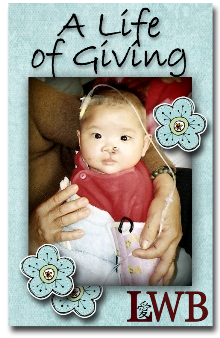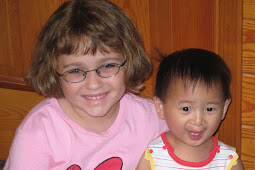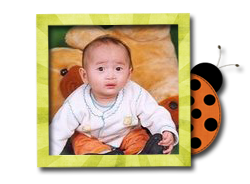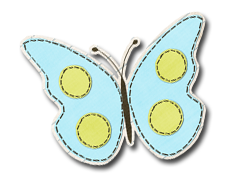Some people say cleft lip and palate is a minor need. I cringe when people say minor. To me, minor is more like a club foot - you fix it and then hopefully never have to deal with it.
Personally I think it is a medium need that needs our attention on a weekly / yearly basis. I recently posted everything that is involved with adopting our son Ricky. I thought I'd post it here.
Ricky was adopted at 16 months with a repaired bilateral cleft lip and unrepaired bilateral cleft palate - it went through the gum. Each child is different but this is Ricky's plan....
1. Lip repair - sometimes China does these prior to adoption. Ricky's was done in China
2. Palate Repair - we did this at 19 months old. Basically they take tissue from the side of the mouth and transplant it to the roof. This is how it was basically explained to us. We were in the hospital 2 days - some kids are onlyin overnight. Ricky was able to go back to daycare after 2 weeks home. Our surgeon did not limit his diet - some do to just liquids. Some will also insist the child is off the bottle - again ours did not.
3. Ricky has a short palate so he had a z-plasty done at 28 months. Some doctors do a phalengeal flap. Age wise - ranges from 3-6. Some children mayhave nasal speech despite closure of the palate. Z-plasty may be done to extendthe soft palate and decrease nasal escape of speech sounds. A pharyngeal flapinvolves raising a flap of tissue from the back wall of the throat and attachingit to the soft palate. The flap deflects some of the air that used to leak outthe nose. The purpose of the z-plasty or pharyngeal flap procedures is to decrease thehypernasality and nasal emissions evident in speech. Nasal emission and nasality generally occur because a person can not consistently close the opening between the oral and nasal cavity. In such instances there is air coming out the nosewhen talking rapidly or during conversational speech. Nasality and nasal emission of air can be observed by either plugging up the nose while talking orplacing a mirror under the nostrils underneath the nose. Small amounts of air can either be seen or felt coming out the nose.
4.Fistula repairs - Ricky doesn't have this but thought I'd throw this in...After the palate repair is performed the tissues may heal in such a way thatthere is still an abnormal opening, called a fistula. This opening may allowfood to move from the oral to the nasal cavity when eating. It may also allowmore air to pass out of the nose during speech. If there are problems with either eating or speech the fistula will most likely be closed when another procedure is to be done.
5. Nose job -Ricky has no cartilage on the bottom his nose so they will take cartilage from the ear and transplant it to the nose. There is talk that they will do this now at 3 1/2 years old but I have read about kids at 5-6.
6. Most children have their lip repair redone as they grow. Typically around age 5. We are thinking this will be done sooner than later for us because he has muscles in the lip that need to reattached. He might need it done again later when he is a teenager as well.
7. Ricky will have to have an applicance put in the roof of his mouth(not sure of name) in which we will turn daily in order to re-align the top jaw. His teeth on top form a V with the tip of the V being his front teeth basically. It needs to be more U shape. This will be done before the bone graft.
8. Alveolar bone graft - Alveolar cleft repair is a secondary cleftprocedure performed when there is insufficient bone in the area of the alveolar(gum-line) defect. Surgical repair of the defect involves taking bone marrow from the patient's hip and grafting it into the cleft defect in the boneyridge. This procedure offers several advantages: a. Provides bone support forthe permanent teeth. b. Provides stability of the boney segments of the upperjaw. c. Assists in closing oral/nasal fistulas that may be present. The improved bone support for the permanent teeth will enable the orthodontist to align individualteeth in the cleft area. The increased stability of the boney segments will helpthe prosthodontist to replace any missing teeth. More than likely we will not use the Hip bone but a manufactured product. They are currently testing this and by the time Ricky needs this I expect that thisis the way we will go. Age I guess 7 -9. Depends on when baby teeth are lost.
9. Complete Orthondontic work - braces, dental implants. We believe he will need probably 2 dental implants.
10. Oh yeah ear tubes - we have had 3 sets due to the first two not stayingin. Ear tubes were done at other surgeries except for the last set.
11. Weekly speech appointments (now done at preschool), one a month speech at the local cleft clinic, 6 month hearing tests, quarterly craniofacial exams (hopefully this will go down to once a year).
I don't post this to scare you off a cleft child. Our day to day life isn't impacted. He doesn't take special meds or need special care. Communication with him is affected and he gets frustrated if we cannot understand him. Right now, he is not understandable to most people. His teachers and family understand him.
Finally, all cleft children are different. Some might NOT need what Ricky needs. We did not know how much he would need until we got him home and looked under the hood so to speak.










